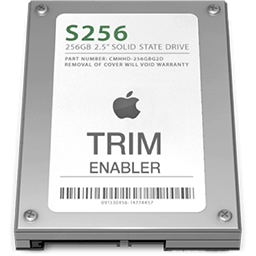
- #Trim enabler 4 vs trimforce update#
- #Trim enabler 4 vs trimforce full#
- #Trim enabler 4 vs trimforce download#
- #Trim enabler 4 vs trimforce free#
Noting that each SSD implements TRIM in a different way, sometimes in ways you'd least expect.Ī 240GB Mercury Electra 6G used in a MacBookPro9, 1 2.3 GHz i7 with processor-intensive applications after a number of months of continuous use shows performance has not deteriorated even without Trimforce being enabled because of advanced DuraWrite controller technology.Īt best, TRIM is a weak solution for enhancing the performance and life of the SSD. The first thing you encounter is a less than friendly warning. If you use one of these drives in your system, you should enable TRIM by typing "sudo Trimforce enable" into the Terminal window.
#Trim enabler 4 vs trimforce download#
However, with the OS X 10.10.4 update, Apple added a command line utility (Trimforce) that can be used to enable TRIM on these third-party SSDs without having to download and hack the system to allow a work around.
#Trim enabler 4 vs trimforce free#
The vast majority of non-OWC SSDs are very dependent on OS side TRIM to manage where the free space is on the NAND. It is actually somewhat of a misnomer because good pages are "collected." Working in the background so it doesn't slow production workflow, it involves searching through the inventory of written pages for pages that have been marked as "stale," then duplicates good pages to new blocks and the old block is erased and marked ready to use. This complex routine is called garbage collection, which keeps as large a reserve of empty blocks ready for writing as possible. With TRIM, when you delete a file from the SSD, the OS will still mark the file space as "not in use" but it also sends a TRIM command to wipe the marked space clean so the SSD can write new data in that space directly as though it had never been previously used. To solve the problem, engineers developed TRIM. Solid state dives must first erase the data in that space before it can record new data and the two-step process slows performance.Īdded to this is the fact that SSDs can only delete data in 512KB blocks, which further slows down the overwrite process. With hard drives, this is done in a single step. When the OS requires more space, it simply overwrites the "not in use" zone. When you delete this file, it isn't instantly removed from the SSD but the OS simply marks the space taken up by the file as "not in use."
#Trim enabler 4 vs trimforce full#
When you first begin using a new SSD, files are copied to a fresh blank space and the SSD writes the data directly at full speed. Left unchecked, the performance of the SSD will deteriorate with use because of the awkward way solid state drives overwrite to areas that already contain data. In retrospect, our two-year delay in introducing SSD until we found controller technology that eliminates the need for TRIM was one of the best decisions we ever made for our customers.īefore you can appreciate this, it's important to understand what TRIM does for most SSDs. When our devices were first introduced more than five years ago, we wanted a solution that solved the problems at the SSD controller level so "work around" added steps aren't required.Ĭhoosing DuraWrite technology negates the need for SSD TRIM. The command line utility enables TRIM on internal third-party SSDs without having to hack Apple KEXT, an OS driver.įollowing the panel discussion, I spent some time with the filmmaker explaining why TRIM is really a non-issue with OWC's SSD long-term speed and performance as well as why it is prudent to use SSD solutions - especially for external storage - that don't depend on TRIM to deliver optimum long-term performance.

External drives connected via USB or Firewire as well as hardware RAID arrays are not supported.

I reminded him that TRIM support only works for drives in the computer.
#Trim enabler 4 vs trimforce update#
He was hoping Apple's recent release of Trimforce with Apple's OS X 10.10.4 update would alleviate the problem, giving him more cycle time with his drives.

His reason was they seemed to slow down over time and for him, time is money. He said he had gotten into the habit of using a certain firm's drives (not OWC's) only five times before they were replaced and used for archiving. One of them noted that he uses SSD in his shoots because they deliver the high-speed performance he needs in his work, are easy to use, easy to manage and rugged. Recently, I was on a conference panel with several independent filmmakers. Apple TRIM Support Only Aids SSD that Needs a Crutch By Larry O Connor


 0 kommentar(er)
0 kommentar(er)
